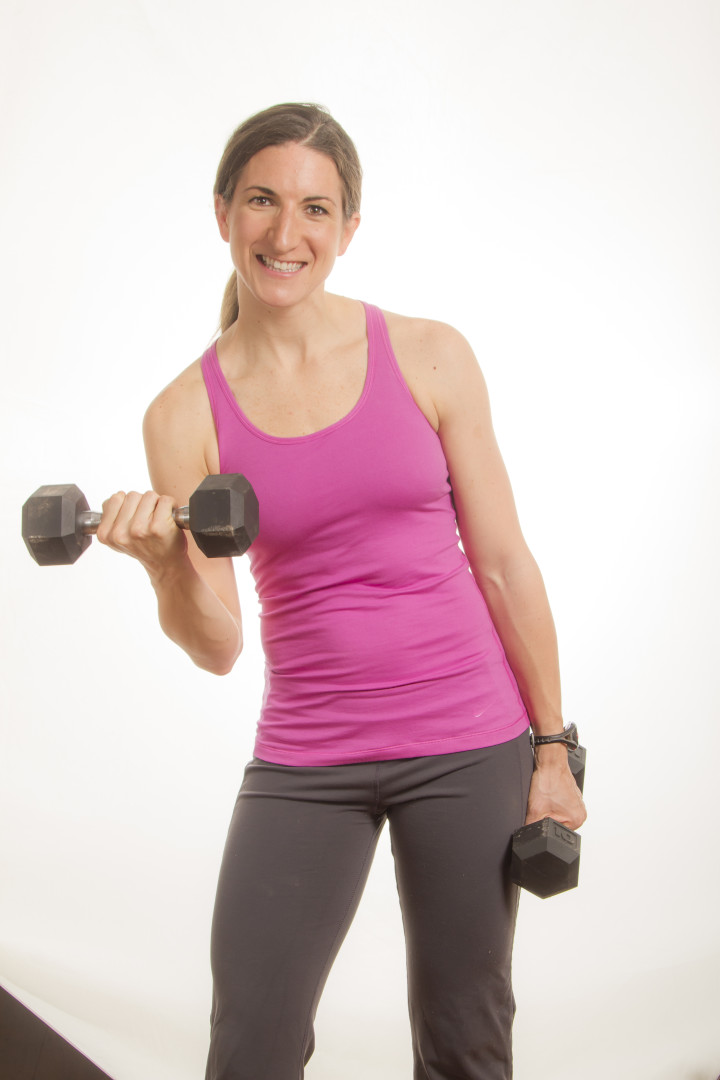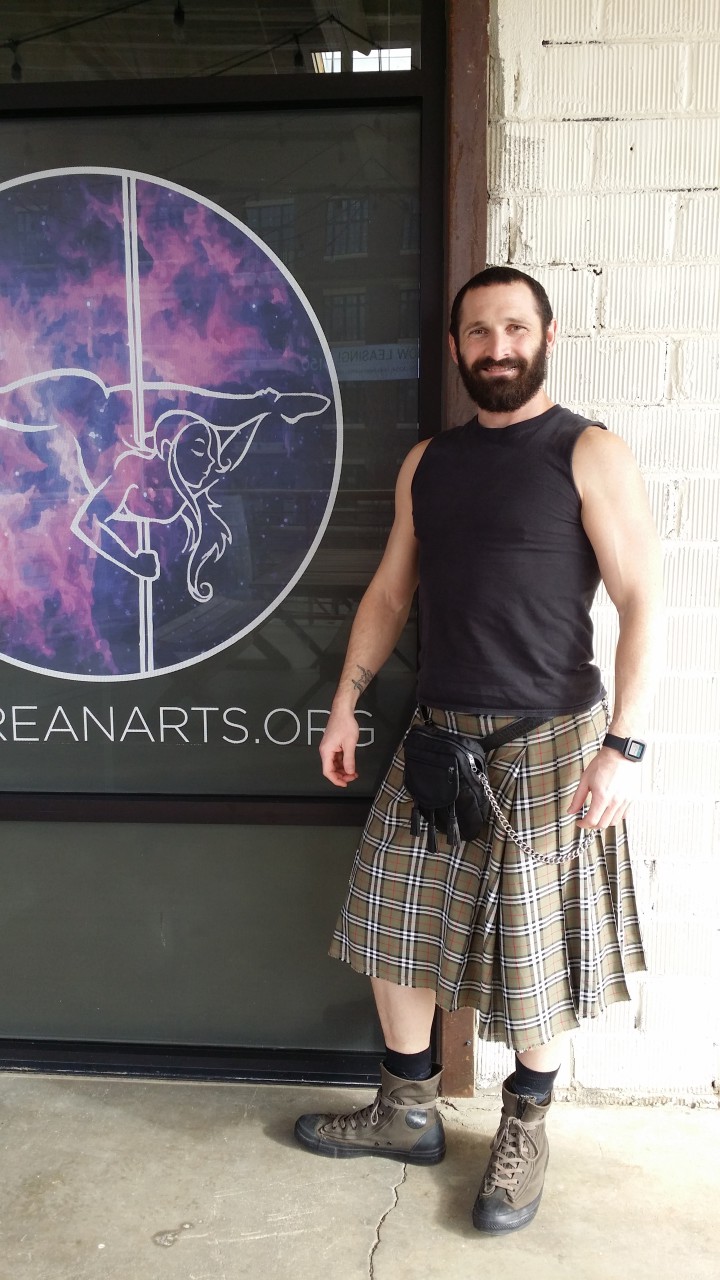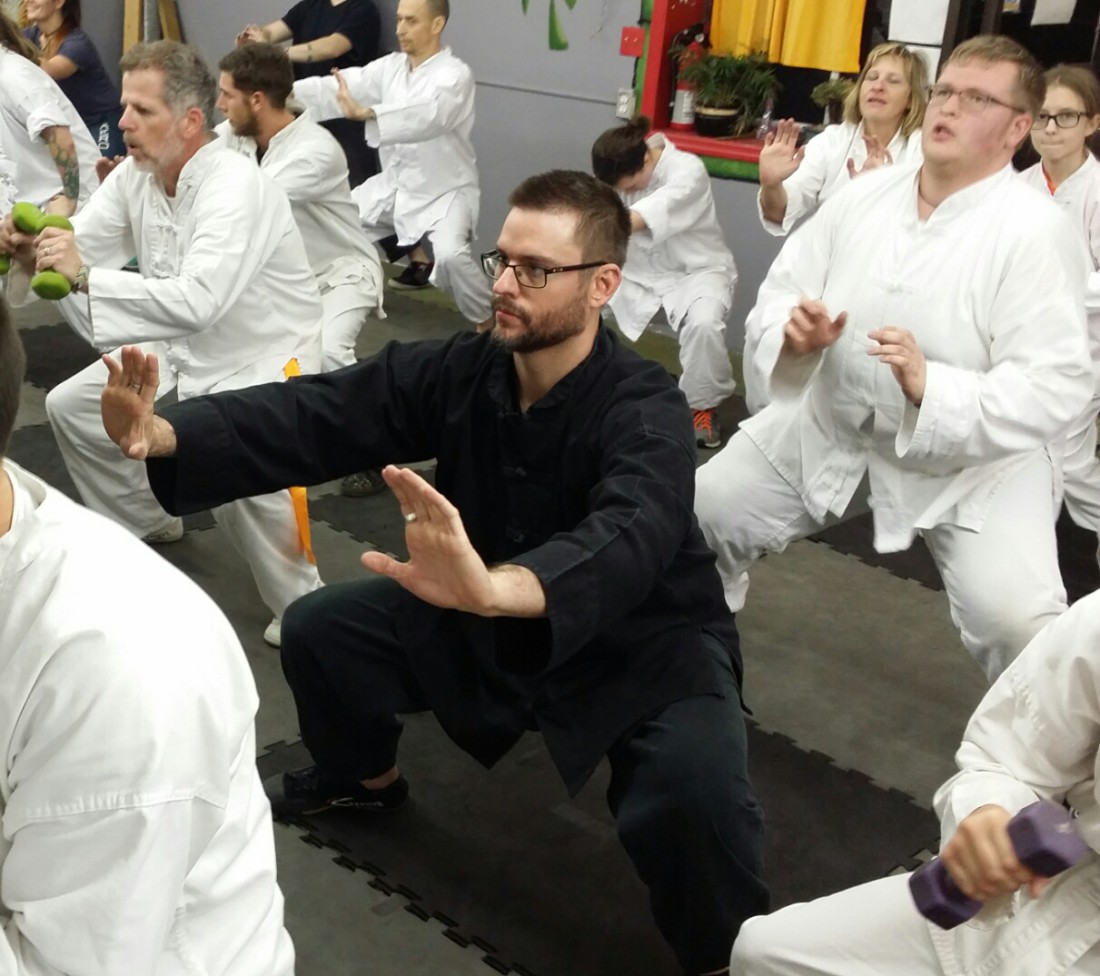In 2008, Jeremy Miller, owner of Shaolin Kung Fu, ended a tumultuous relationship. He didn’t want to sit around and suffer through the heartbreak. “I had all of this negative energy,” he remembers. “Some friends of mine had done martial arts and encouraged me to try it. Jumping and kicking all over the place—exciting. [I thought], ‘I’ll give it a shot.’”
That decision changed the course of Miller’s life. Of course, whatever reason a person has for wanting to get fit, it can still seem daunting. However, some local fitness practitioners say the way forward is easier than beginners might imagine. They advocate for a range of activities, from kung fu to kayaking, and agree that instead of trying to run the marathon in one day, beginners who want to achieve optimal health should start where they are, incorporate cardiovascular and strength training with flexibility — preferably through intervals — and enjoy the process.
Soon, Miller was at Shaolin every day. “The things they did there were harder than anything I had ever done,” he says. “Anytime the doors were open, if I could be in that place and around those people; that’s where I wanted to be.”
The classes at Shaolin, which last 50 minutes for beginners and 80 minutes for middle and upper ranks, begin with an outside, two-minute run. The next 15 to 20 minutes are spent stretching, which Miller argues is one of the most important aspects of training for martial artists because it warms the hamstrings, back and knees, the primary muscles used in the classes. The workouts incorporate kicking and punching techniques as well as fighting drills.
Miller believes that the best way to get fit in martial arts is to learn the craft through repetition, much like learning to play an instrument. “If you are dedicated to playing guitar, you have to do it all the time,” he says. “It can’t just be once a week or once a month. If you are in that place where it becomes a priority, you can become as good as anyone pretty fast. It’s about dedication, just like anything in life. You’re changing, you’re developing, all the time.”
Would-be students drop in frequently to learn about the school and participate in two free classes. The pace is intense at times, similar to interval training, so Miller tells newcomers to take it easy and not do too much. “The term ‘beginner’ is vague,” he says. “It depends on what the new student has experienced in life and how often they are able to come to class. Kung fu is a journey, not a destination. As we become fitter, the classes don’t become easier — we just push ourselves harder.”
Miller teaches classes five days a week and has earned a second-degree black belt. He invites students to punch him in the stomach so he can gauge the strength of their strikes. “I signed up to learn self-defense and developed a physique in the process,” he says. “A fit person looks a million different ways. There are as many body types as there are people. As long as we’re getting stronger every day, that’s fitness.”

Intervals: The shorter way to achieve benefits of exercise
Dr. Aubri Rote, exercise physiologist and assistant professor in the Health and Wellness Department at UNC Asheville, prefers not to emphasize time spent exercising, focusing instead on intensity.
“There is a misconception that you need to spend hours exercising to positively impact health,” she says. “Types of exercise and exercise intensities is a better starting point. Sometimes a beneficial workout can be completed in a small amount of time. High-intensity interval training is a great way to fit a workout into a busy day and get the most bang for your buck. A running HIIT workout could consist of running at a high intensity for one minute and then walking for four minutes. Beginners should do as many cycles as they can — even starting with one or two is good.”
Rote sees strength and flexibility training as integral parts of the process. “Some components of exercise are too important to neglect,” she says. “Strength training is incredibly important for maintaining health and the ability to carry out day-to-day activities. Maintaining mobility is also very important. Yoga is a great way to do this, either in classes or online. Or, you can be intentional about making time to do some deep stretching every day or night.”
Exercise helps fight diseases, especially ones responsible for the highest mortality rates in the U.S., so Rote says that non-exercisers should do whatever they can, however slowly at first, to get moving. “Starting an exercise program can be intimidating, but the benefits to health are worth the effort,” she says. “Regular exercise reduces the risk of several major diseases, including heart disease, stroke, Type 2 diabetes and some cancers. For beginners, remember that starting small is not only beneficial for health, but it is also more likely to allow you to sustain your regimen.”
Beginners can start with two days of movement and gradually incorporate more into their lives, she notes. “Even if you can only fit in one day of HIIT strength training and one day of cardio, that’s a great start, and it will result in health and fitness benefits. You don’t need to work your way up to exercising every single day. In fact, two days of strength training and two days of cardio is great, especially if it is something you can maintain.”

Feeling good
Kenda Mullert, health promotions coordinator at UNC Asheville, health education specialist and personal trainer, has always had an interest in helping people become more healthy. “People don’t know how their body is supposed to feel until they feel good,” she says. “We can all identify with what unhealthy feels like. Inactivity breeds inactivity. But feeling really good is the first thing that motivates us.”
Mullert first asks clients how much time they are able to commit to. “It is far better to do less and be consistent than to do more and burn out because if feels like it’s too much,” she says. In general, she advocates walking and light-weight workouts as the simplest way to begin an active lifestyle. Her plan is walking for 20-30 minutes on Mondays, Wednesdays and Fridays, and lightweight workouts on Tuesdays and Thursdays.
For correct weight lifting form, she says it’s best to hire a personal trainer. “For somebody that’s just starting, weightlifting is a skill,” she continues. “A personal trainer can teach you. If you’re worried about lifting weights safely, then hire somebody for one or two sessions.” Those who don’t want to lift weights also have other options. “Body-weight exercises are fine,” Mullert says. “Do what you can with what you have. You don’t have to join a gym or buy expensive equipment. You can do things in your living room. You can do body-weight squats, push-ups and pull-ups.”
Mullert tells clients not to fear the effort they will need to put in to accomplish their goals. “We want a 30-day plan,” she says. “We want a detox. We don’t want to do the work, but the work is the magic, the success. The work is the transformation.”
Helping clients create the feeling of accomplishment for themselves is her greatest motivator, Mullert says. She urges her clients to decide for themselves what success means. “Whether you went on a walk during lunch or you lifted weights after work, those feelings of success build up, and then you have a lifetime of successes. It’s now a lifestyle.”
Walking the talk
Dr. Rebecca Cramer practices family medicine at Community Family Practice on Merrimon Avenue in North Asheville. She advocates for a healthy lifestyle building on the model that CFP has created.
“We have a holistic approach here,” Cramer says. “I enjoy counseling people about preventive health care. In our annual wellness visits and physicals, I spend time talking about what types of exercise would be appropriate for them.”
Cramer refers to the Office of Disease Prevention and Health Promotion’s current guidelines to explain the amount of exercise necessary for good health. “To really see the benefit of activity, you have to get 120-150 minutes a week,” she says. “That’s maybe 30 minutes a day. The first thing I try to do, especially if it’s a foreign concept to them and they aren’t comfortable with it, is normalizing it. You don’t have to be out there doing marathons or even a 5K. You just have to get movement into your life. We always want to start slowly.” Cramer tells patients to start by taking a 10-minute walk around the neighborhood to meet people, and finding an exercise they like to do, not doing too much too quickly. “It’s all about starting small and realizing that it’s something you can build on over time,” she says.
When Cramer is not advising patients about the benefits of exercise, she goes home and walks the talk. “I do something every day,” she says. “I truly enjoy it. It’s my time for myself and to de-stress. I love running, yoga, mountain- and road-biking, and kayaking. I have a super high-energy Australian cattle dog. We spend a lot of time wearing each other out.” In the winter, she still kayaks, wearing a dry suit and fleece.

The kilted machine
Alan Malpass prefers to wear kilts in between his workouts. “I made a kilt for a costuming project for a musical theater project in college, and I put it on and that was it,” he explains. “I’ve been wearing kilts ever since, unless I’m teaching a class or riding a motorcycle.”
Malpass can teach just about any group fitness class. He began swimming in the fifth grade and later became involved in dance and martial arts. His degree in musical theater performance led him to dance with the Asheville Ballet in 2006, and he began participating in aerial arts in 2007. Malpass is certified in kickboxing, cardio dance, weight lifting, step and water classes. He teaches at Vitality Fitness, Empyrean Arts, and UNC Asheville.
Malpass advises the novice to start slowly. “For someone who has no fitness experience, I tell them to walk with low intensity, 10 or 15 minutes three to five times a week,” he says. “You don’t want to overdo it. You can discourage yourself easily, and you’re at a higher risk for injury. I would gradually increase the frequency and increase the time.” To build muscle, he advises them to use what they have at home. “I tell people who don’t have any equipment at home to use for strength to grab two cans of tomatoes,” Malpass says. “You can improvise with a jug of milk or water bottles. A little extra resistance can go a long way when you’re just getting started.”
Interval training can also be incorporated early on, but the best effect will come from focusing on the lower body. “Cycling is best for the new exerciser, because it will strengthen the strongest muscles in your body,” Malpass says. “It’s also going to challenge your cardio. You will start building muscle mass, and it’s stationary and stable for the new exerciser.” Cyclists can choose different levels of interval workouts that mimic riding on hills outdoors, he adds.
The key to creating an active lifestyle, Malpass says, is for people to find activities they enjoy, perhaps a class. “It could be a weightlifting class or a step class,” he says. “Finding the instructor or the trainer that works with you and that you click with is really helpful. Don’t be discouraged by one negative experience. It’s going to happen. If it’s your first experience, don’t let that be a wall. Find something else.”
Malpass reminds the beginning exerciser that taking action is the most important thing, even though it will take time to feel comfortable incorporating the new movements. “Unless it’s something that you’re familiar with, you’re not going to feel successful during the first or second class or training session. Commit yourself to three or four. After four, you’ve done it enough that your brain is going to get out of the way so you can challenge your body. Just stay focused.”




That drop kind of looks like Boatbuster on Wilson Creek. Anyone know or agree?
I’m 99% sure that’s Boatbuster. Here’s a 1st person view of the drop. He took the same line as the guy in the photo above. At lower levels you have to go left. The next rapid is Toilet Bowl (I think they call it something different now)
https://www.youtube.com/watch?v=hf-LPkbwBFc
Exercise can improve health? Let me get a pen.
The key to fitness is consistency. Establish a baseline that is easy to do and NEVER deviate from it. The goal is to make whatever you’re doing a habit. If you get bored, increase your effort. If you get tired of frustrated, return to the baseline, but never abandon it. Eventually you will develop conditioning that will allow you to raise your baseline to your optimum level. And eventually you will get to the point that it is more painful to not exercise than to deal with the hassle of doing so.
great advice, Snowflake~ …. I adhere to that baseline minimum I do daily at Gold’s Gym. I make myself do cardio first then weights/pulls…
the thing fat people don’t realize is that the more you exercise, the more energy you will have … many people have such terrible diets they must change also…I know people who refuse to eat any green veggies…why would a human do that ? ignorance.
nice